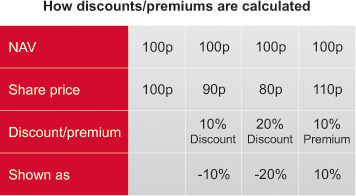The difference between the prices at which you can buy and sell shares and securities. It’s also known as the ‘spread’ or ‘bid-offer spread’.
When you buy and sell shares in investment companies, you may see two prices quoted:
- the higher price (the 'offer' price) is the price that you can buy the shares for.
- the lower price (the ‘bid’ price) is the price you can sell the shares for.
The difference between the two is the dealing spread.
If you buy shares, you’ll need the bid price of the shares to rise by more than the dealing spread to make a profit. The dealing spread varies between investment companies. For example, large generalist investment companies may have smaller spreads than more specialist smaller investment companies.
See also share price.


